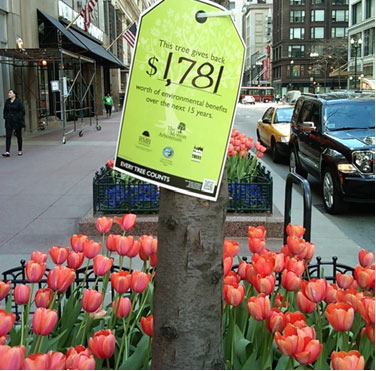
Source: Jalopnik.com
Much has been said about the parking meter fiasco and how badly Chicago has been burned. I don’t have any more to add. Rather, I’d like to focus on missed opportunities in parking technology – opportunities at the meter that support urbanism and can generate real revenues for the city. Principally, this opportunity revolves around variable pricing policy.
While cars may be a part of urban life, free (or under-priced) parking does not have to be. Donald Shoup, author of the preeminent manual on the topic, The High Cost of Free Parking, states that planners tend to tackle street parking problems by increasing off-street parking requirements. “Rather than charge the right price for on-street parking, cities attempt to require the right quantity of off-street parking,” according to Shoup.
Chicago’s parking meter rates before the lease were low in many areas (they still are likely too low in some places). They were low because cruising and overcrowding of parking were the staples of urban life, particularly in many of the lakefront neighborhoods and downtown. Conversely, we know that if parking were priced too high, vacancies would be an issue. This is simple economics, the supply and demand curve (see below).
True market priced parking allow for free parking until an occupancy reaches 85%. This is due to the marginal costs of adding parking is zero, Yet, when demand (occupancy) increases, the marginal cost of adding additional parking increases. Because on-street parking capacity is fixed, costs must rise to meet demand. Thus parking costs should rise. This is what is called variable parking.
A smart parking meter, such as what has been installed in San Francisco, for example, can manage the availability of on-street parking by utilizing smart meters that can adjust prices dynamically, based on demand.
This technology is enabling not just better revolution of parking, but management of parking as well.
The problem with Chicago’s parking meter lease is not just that Chicago no longer controls parking, an important revenue generator in its own right, it is that the City gave up the right to control planning policy on some of the most vibrant land it owns – the streets. The City gave up the right to manage its on-street parking, to further planning goals and livability projects that create complete streets. Such projects might be pop-up cafes, bike lanes, street parades and festivals, all of which can reduce parking supply. And all of which are penalized under the terms of the parking lease.
The shame is that at the moment when parking meter technology is revolutionizing the way cities manage parking, Chicago has turned over almost significant control over to a private company. The shame is that transportation planning is moving towards complete streets policies and Chicago finds itself without the flexibility needed to make its streets more livable and more complete.











